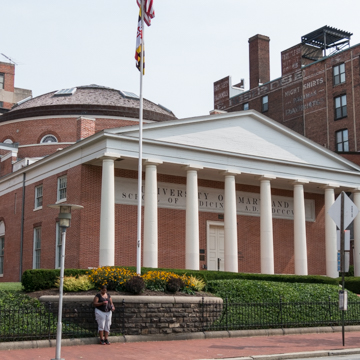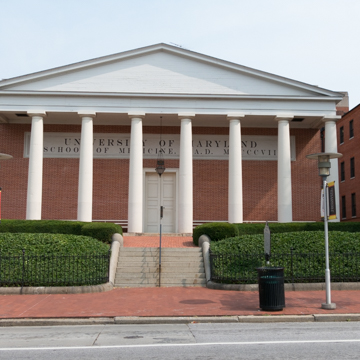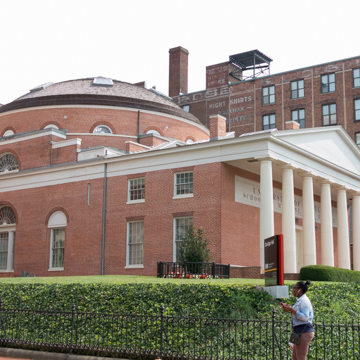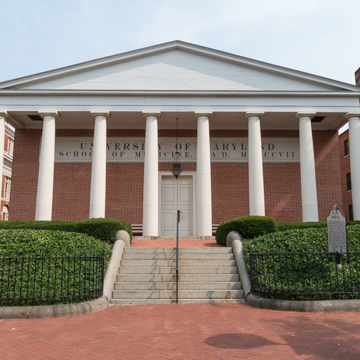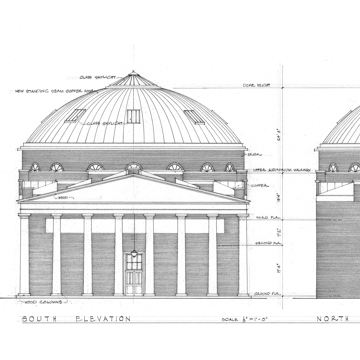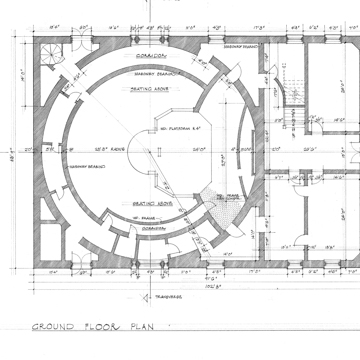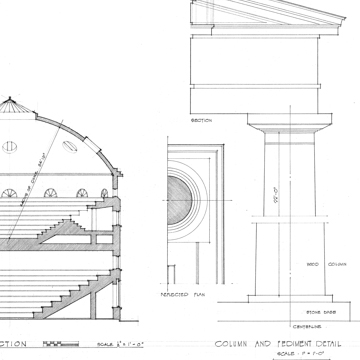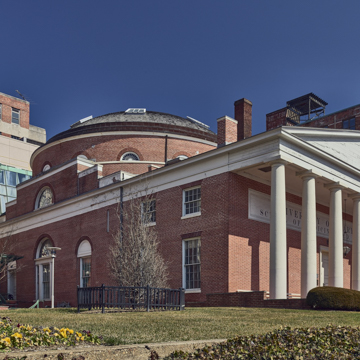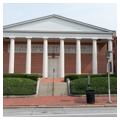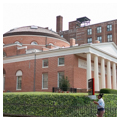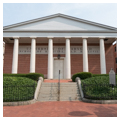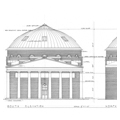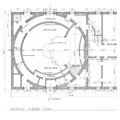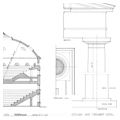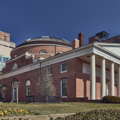Built of painted handmade brick for the College of Medicine of Maryland, this is the oldest anatomical theater in the nation and one of Baltimore’s earliest neoclassical buildings. It features a massive pedimented portico, Delorme dome, and rotunda reminiscent of the Pantheon in Rome. The building is named for physician John Beale Davidge, the college’s founder and first dean, who offered lectures on anatomy and physiology, teaching through the path-breaking dissection of human cadavers. The building speaks to the changing nature of medical study in the early nineteenth century when dissection was recognized as the best means for gaining practical knowledge of the workings of the human body.
Modeled after contemporary examples in both the United States and Europe, Davidge Hall combined classroom, library, and laboratory space with two stacked lecture halls. Chemical Hall’s first-floor amphitheater features tiers of benches around a central viewing area. Anatomical Hall above is surmounted by the dome, punctuated by circular skylights with an oculus at its apex and an ornamental plaster ceiling. Only three other anatomical theaters were erected in the nation prior to this (Pennsylvania Hospital, 1796; the University of Pennsylvania, 1805–1806; and Dartmouth College, 1811), none of which survives. It was designated a National Historic Landmark in 1997.
References
Dilts, James D., and John Dorsey. A Guide to Baltimore Architecture. 3rd ed. Centreville, MD: Tidewater Publishers, 1997.
Measured drawings [delineated by Architecture Department, Carnegie Institute of Technology], “University of Maryland, Medical Building (Davidge Hall),” HABS No. MD-304, Historic American Buildings Survey, National Park Service, 1962. Prints and Photographs Division, Library of Congress, Washington, D.C.
Waite, John G., and Associates. “College of Medicine of Maryland (Davidge Hall),” Baltimore County, Maryland. National Historic Landmark Nomination, 1997. National Park Service, U.S. Department of the Interior, Washington, D.C.


